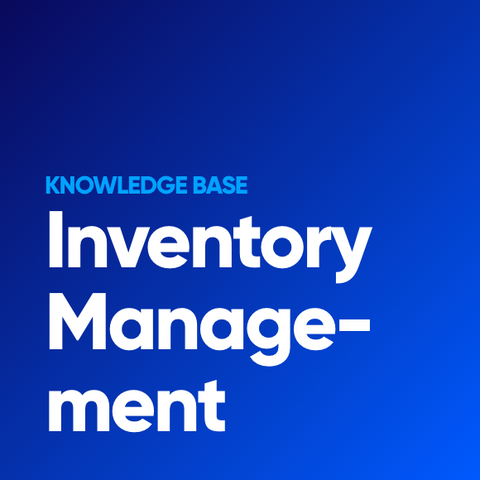Inventory Management: The Art of Tracking and Controlling Stock Levels
In the dynamic business world, effective inventory management is an art that can make or break a company's success. Inventory refers to the goods, raw materials, and products a business holds for resale. Managing this inventory efficiently is essential for maintaining a smooth operation, meeting customer demands, and ultimately driving profitability. In this article, we delve into the intricacies of inventory management, exploring its importance, key strategies, challenges, and the technologies that facilitate this critical aspect of business.
The Importance of Inventory Management
Inventory management is a critical aspect of operations for various reasons:
-
Customer Satisfaction: Maintaining optimal stock levels ensures that products are available when customers want them. This leads to higher customer satisfaction and loyalty.
-
Cost Control: Effective inventory management helps control carrying costs, such as storage, insurance, and potential obsolescence.
-
Cash Flow: Efficient inventory management ensures that capital isn't tied up unnecessarily in unsold stock. This helps maintain healthy cash flow for other business needs.
-
Order Fulfillment: Timely order fulfillment is crucial for meeting customer demand and reducing lead times.
-
Risk Mitigation: With a well-managed inventory, businesses can reduce the risk of stockouts, overstocking, or obsolete inventory.
Key Inventory Management Strategies
Effective inventory management involves various strategies and techniques:
-
ABC Analysis: Classifying inventory, such as A (high-value, low-quantity), B (moderate-value, moderate-quantity), and C (low-value, high-quantity), helps in prioritizing control efforts.
-
Just-In-Time (JIT): JIT inventory management aims to reduce carrying costs by ordering inventory only when needed for production or sales. It minimizes storage costs and reduces the risk of obsolete inventory.
-
Safety Stock: Maintaining safety stock accounts for unexpected fluctuations in demand or lead times, reducing the risk of stockouts.
-
Economic Order Quantity (EOQ): EOQ helps determine the optimal order quantity to minimize total inventory costs while meeting customer demand.
-
Vendor-Managed Inventory (VMI): VMI involves suppliers monitoring and replenishing a business's inventory. This strategy shifts the burden of inventory management to the supplier, reducing the buyer's costs.
-
Bulk Shipments: Businesses can often secure discounts from suppliers by ordering in bulk, reducing unit costs.
-
First-In, First-Out (FIFO), and Last-In, First-Out (LIFO): These methods determine how inventory is valued for accounting purposes. FIFO assumes that the oldest items are sold first, while LIFO assumes the newest items are sold first.
Challenges in Inventory Management
Inventory management is not without its challenges:
-
Forecasting Accuracy: Inaccurate demand forecasts can lead to overstocking or stockouts.
-
Storage Costs: Storing inventory can be expensive, particularly for businesses with large quantities of goods.
-
Obsolete Inventory: Products that become obsolete or expire can lead to losses.
-
Stockouts: Running out of essential items can result in lost sales and customer dissatisfaction.
-
Supply Chain Disruptions: External factors, such as supplier issues, natural disasters, or global events like the COVID-19 pandemic, can disrupt the supply chain, affecting inventory levels.
-
Human Error: Ordering, receiving, or record-keeping mistakes can lead to inventory discrepancies.
Technologies Facilitating Inventory Management
Inventory management has been significantly enhanced by technology. Here are some technological solutions that businesses use to streamline their inventory processes:
-
Inventory Management Software: Specialized software helps businesses track stock levels, manage orders, and generate reports for better decision-making.
-
Barcoding: Barcoding systems allow for quick and accurate tracking of inventory items. They are often integrated with inventory management software.
-
Radio-Frequency Identification (RFID): RFID technology enables real-time tracking of items within a facility, providing better visibility into inventory levels.
-
Automated Reordering Systems: These systems monitor inventory levels and automatically generate purchase orders or replenishment requests when the stock reaches a certain threshold.
-
Cloud-Based Inventory Solutions: Cloud-based platforms allow for remote access and real-time updates, making it easier for businesses to manage inventory across multiple locations.
-
Point of Sale (POS) Systems: These systems can link sales directly to inventory, providing real-time information on product levels and sales trends.
The Future of Inventory Management
The landscape of inventory management is evolving with technology and changing consumer expectations. Here are some trends shaping the future of inventory management:
-
Data Analytics: Businesses increasingly use data analytics to gain insights into consumer behavior, demand patterns, and inventory optimization.
-
Automation: Automation is becoming more prevalent in inventory management, from robotic picking in warehouses to automated reorder systems.
-
Blockchain: Blockchain technology can improve supply chain transparency, helping businesses track the movement of goods more accurately.
-
Sustainable Practices: Sustainability is becoming a priority, and businesses are looking for ways to reduce waste and minimize environmental impact in their inventory management.
-
E-commerce Integration: The growth of e-commerce has led to a greater emphasis on inventory management for online businesses.
-
On-Demand Production: Some businesses are moving toward on-demand or 3D printing for more efficient inventory management, reducing the need for extensive storage.
Inventory management is an art and a science, a critical aspect of any business's success. Effective management involves a combination of strategies, technologies, and a deep understanding of your business's unique needs. As technology advances and consumer expectations evolve, companies that stay ahead in inventory management will be better positioned to meet customer demands efficiently while maintaining healthy cash flow and profitability. Whether you're a small retailer or a global manufacturer, effective inventory management can be the key to achieving and sustaining business success.

Inventory Management





